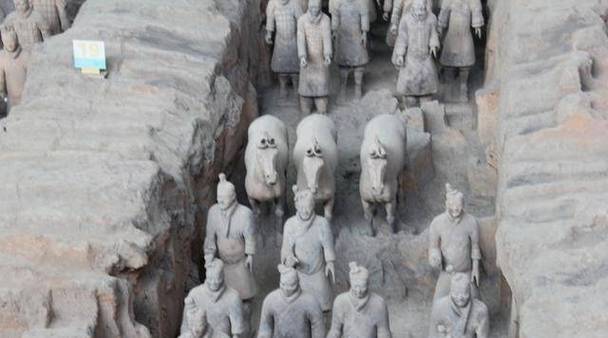
Who Discovered the Terracotta Army?
The Accidental Discovery
The Terracotta Army, one of the most significant archaeological discoveries of the 20th century, wasn't unearthed by seasoned archaeologists, but by a group of humble farmers. On a seemingly ordinary day, March 29, 1974, seven men from the village of Xiyang, near Mount Li (Lishan) in Shaanxi province, China, were about to make history.
The group consisted of:
- Yang Zhifa: He is often credited as the leader of the group and the first to uncover a terracotta fragment.
- Yang Zhifa's five brothers: Their names aren't as widely documented, but their contribution to the discovery is equally crucial.
- Wang Puzhi: A neighbor who joined the group's effort in digging the well.
These men were engaged in the strenuous task of digging a well, hoping to alleviate the water shortage in their fields. Little did they know that their shovels were about to strike something far more significant than water.
The Location and the Significance of Mount Li
The discovery site was no random location. It was approximately 1.5 kilometers (0.93 miles) east of the tomb mound of Qin Shi Huang, the first emperor of unified China. Mount Li (Lishan), chosen as the emperor's burial site, was already renowned for its historical and cultural importance. The region was also known for its numerous underground springs and watercourses, which made digging wells a common practice.
Unearthing History
While digging, Yang Zhifa's shovel hit something hard. Upon clearing the dirt, he was astonished to find fragments of what appeared to be ancient pottery. Initially, the farmers were more concerned about the potential damage to their well, as the terracotta pieces were hindering their progress. They gathered the fragments, which included heads, arms, and torso pieces of terracotta warriors, and left them on the edges of the field.
From Fragments to a World Wonder
Word of the discovery spread quickly, reaching local authorities and then archaeologists. It didn't take long for experts to recognize the significance of the findings. The fragments were identified as belonging to life-sized terracotta warriors and horses, part of a massive army buried to protect Emperor Qin Shi Huang in the afterlife.
Following this initial discovery, large-scale excavations began, revealing thousands of meticulously crafted terracotta soldiers, each with unique facial features, hairstyles, and armor, standing in battle formation. The discovery sent ripples through the archaeological community and beyond, instantly putting the Terracotta Army on the world map.
The Legacy of the Farmers
While the Terracotta Army brought international fame to Xi'an and became a symbol of China's rich history, the lives of the farmers who made the discovery didn't change dramatically. Some of them, including Yang Zhifa, continued to live simple lives in their village. Their story is a reminder that sometimes, the most extraordinary discoveries are made in the most ordinary of circumstances.
Q&A
1. What were the farmers originally digging for when they found the Terracotta Army?
They were digging a well in hopes of finding a reliable water source for their fields.
2. Why was the location of the discovery significant?
It was near Mount Li, the burial site of Emperor Qin Shi Huang, who had ordered the creation of the Terracotta Army.
3. What did the farmers initially do with the terracotta fragments they found?
They collected the fragments and placed them at the edge of their field, initially more concerned about their well than the historical significance of the pieces.